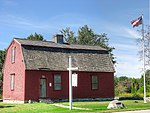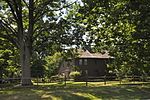Lebanon, Connecticut
1700 establishments in ConnecticutLebanon, ConnecticutPopulated places established in 1700Towns in ConnecticutTowns in New London County, Connecticut ... and 2 more
Towns in Southeastern Connecticut Planning Region, ConnecticutUse mdy dates from July 2023

Lebanon is a town in New London County, Connecticut. The town is part of the Southeastern Connecticut Planning Region. The population was 7,142 at the 2020 census. The town lies just to the northwest of Norwich, directly south of Willimantic, 20 miles (32 km) north of New London, and 20 miles (32 km) east of Hartford. It is best known for its role in the American Revolution when it was a major base of American operations, and for its historic town green, which is one of the largest in the nation and the only one still used partially for agriculture.
Excerpt from the Wikipedia article Lebanon, Connecticut (License: CC BY-SA 3.0, Authors, Images).Lebanon, Connecticut
Mack Road,
Geographical coordinates (GPS) Address Nearby Places Show on map
Geographical coordinates (GPS)
| Latitude | Longitude |
|---|---|
| N 41.6325 ° | E -72.24 ° |
Address
Mack Road 209
06249
Connecticut, United States
Open on Google Maps








